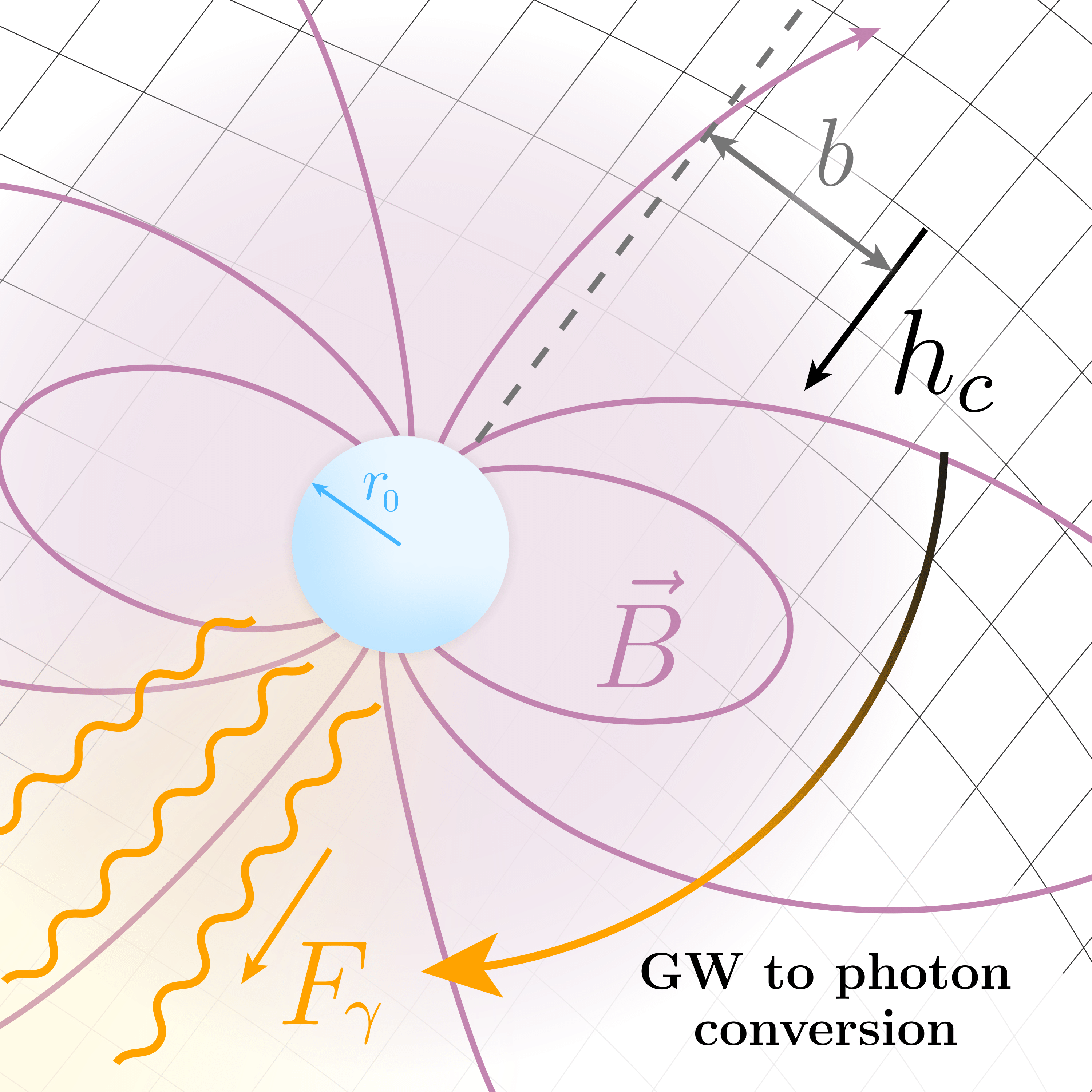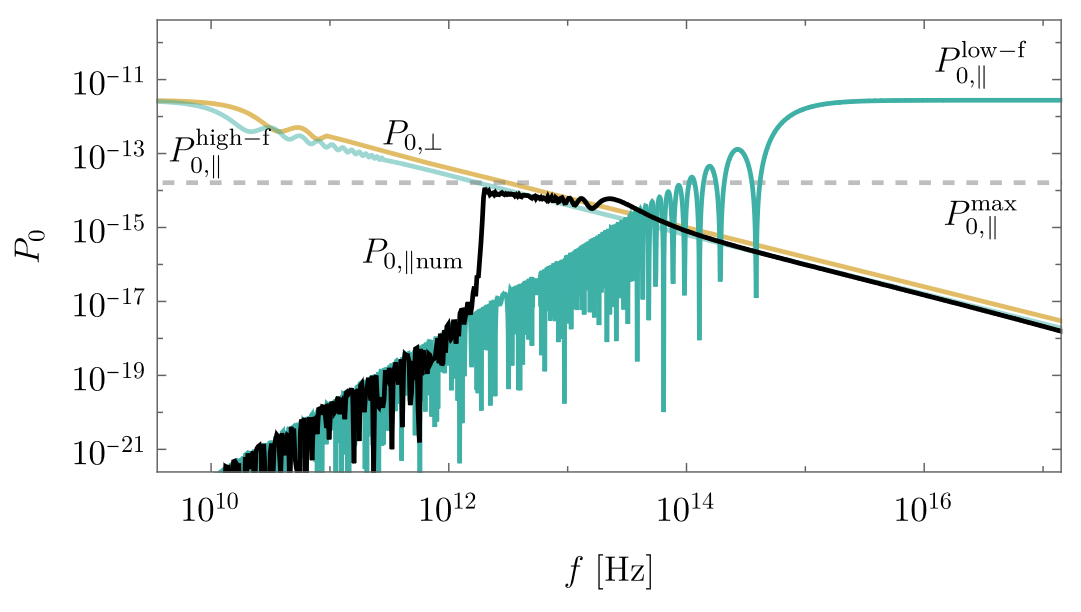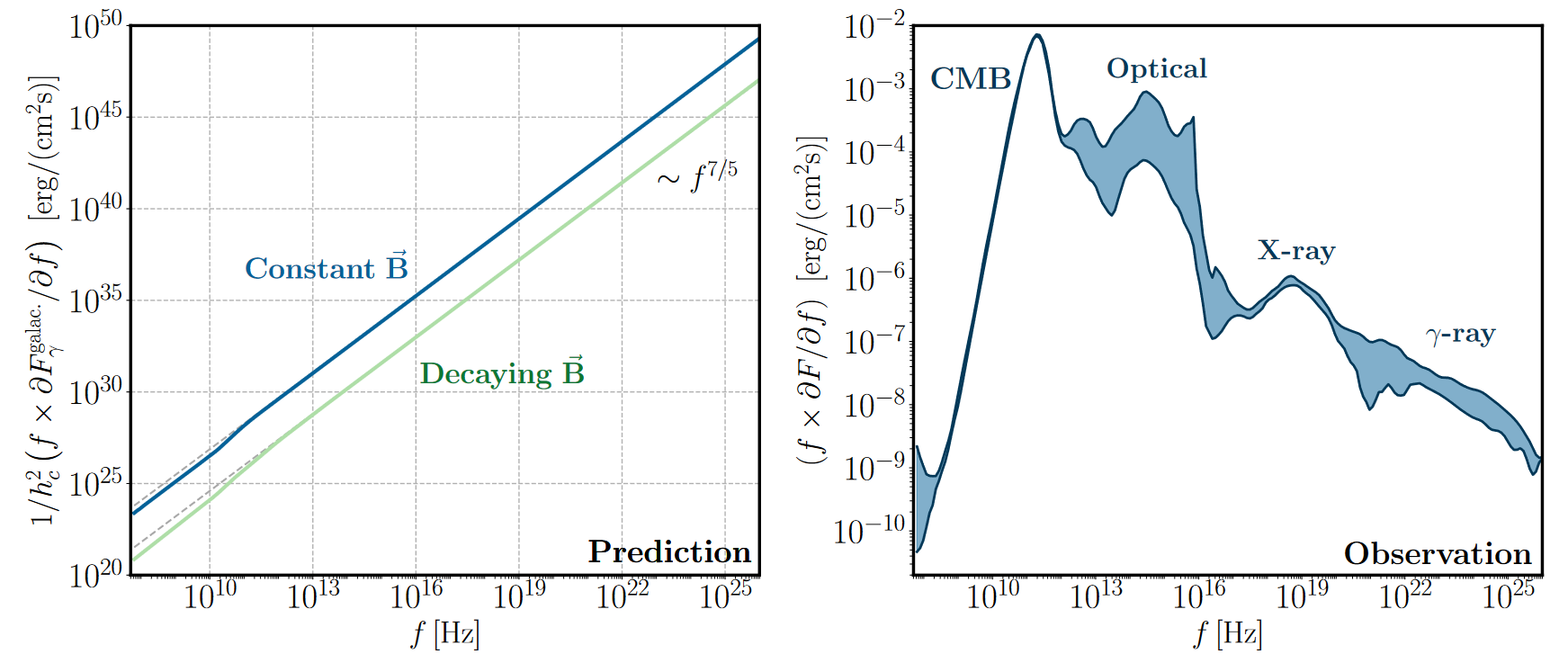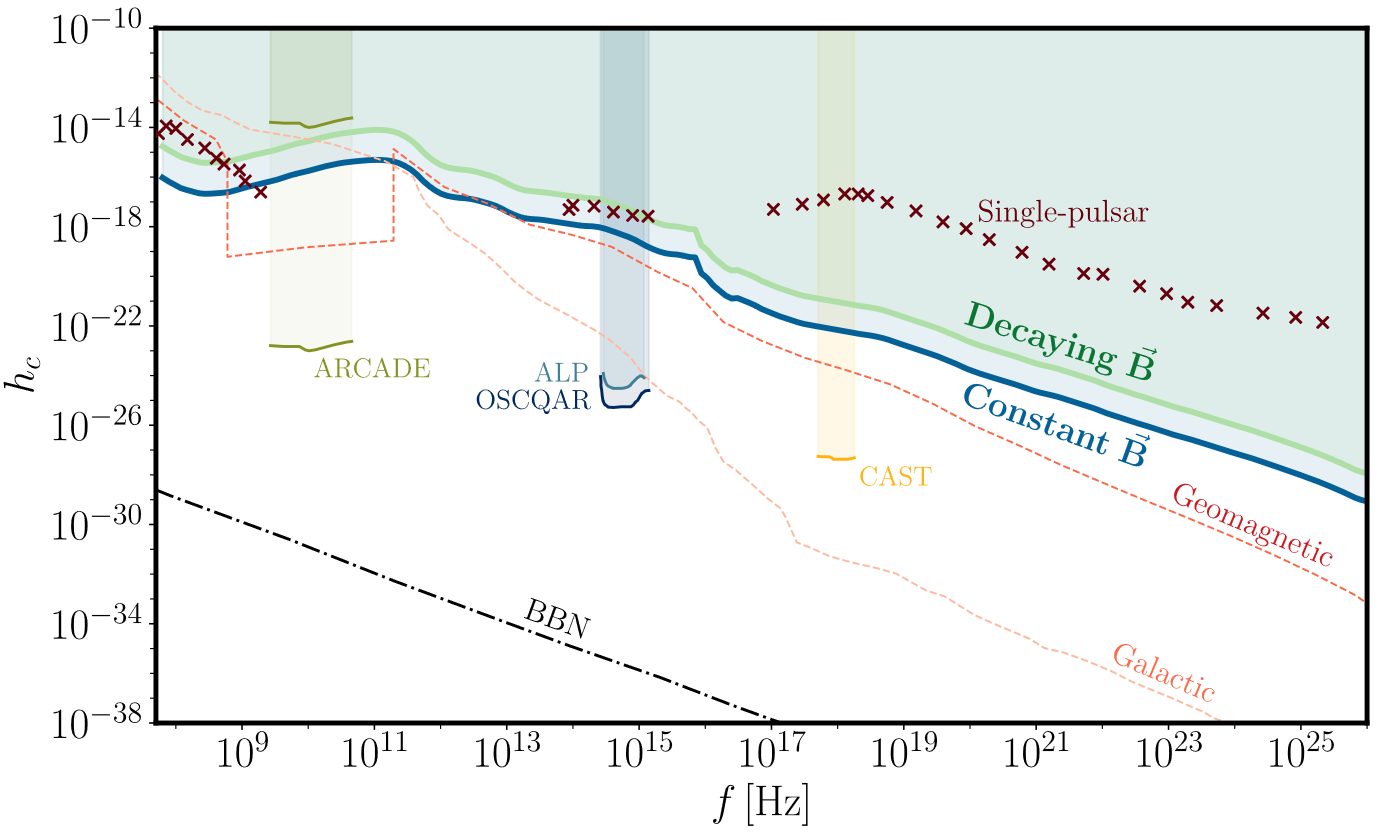The search for Gravitational Waves (GWs) has brought many successes during the last decade, thanks to the LIGO-VIRGO-Kagra collaboration and Pulsar Timing Arrays. These observatories have measured GWs in the kHz and the nHz regimes, respectively. These frequency regimes are well motivated, but in principle GWs could be found too in frequencies above the MHz, the so-called High-Frequency GWs (HFGWs). Such GWs could be produced by early universe cosmological sources, or by Primordial Black Hole merges.
These kind of GWs are difficult to explore experimentally because they correspond to very small wavelengths, and we require experiments with a similar size. However, the detection of HFWGs may be possible using the conversion of gravitons into photons in the presence of an intense magnetic field, the so-called inverse Gertsenshtein effect. In this paper, we study the conversion of isotropic HFGWs into photons in the magnetosphere of galactic neutron stars.
 GWs with a characteristic strain \(h_c\) can be converted into a flux of photons \(F_\gamma\) inside a neutron star magnetic field \(\vec{B}\), through the so-called inverse Gertsenshtein effect. Here, \(b\) is the impact factor of the graviton trajectory.
GWs with a characteristic strain \(h_c\) can be converted into a flux of photons \(F_\gamma\) inside a neutron star magnetic field \(\vec{B}\), through the so-called inverse Gertsenshtein effect. Here, \(b\) is the impact factor of the graviton trajectory.
The probability of conversion for an standard neutron star is shown here as a function of the frequency \(f\). Notice the probability depends on the polarization of the GW mode, either parallel \(\parallel\) or perpendicular \(\perp\).
 Conversion probability as a function of the frequency for an NS with \(B_0 = 10^{13}\, \mathrm{G}\) Gauss, \(T = 1\,\mathrm{s}\), and \(r_0=10\,\mathrm{km}\). In black, the numerical result for the parallel polarization. In yellow, the result for the perpendicular polarization. In green, high and low frequency approximations for the parallel probability.
Conversion probability as a function of the frequency for an NS with \(B_0 = 10^{13}\, \mathrm{G}\) Gauss, \(T = 1\,\mathrm{s}\), and \(r_0=10\,\mathrm{km}\). In black, the numerical result for the parallel polarization. In yellow, the result for the perpendicular polarization. In green, high and low frequency approximations for the parallel probability.
Since this conversion can happen in any galactic neutron star, we integrate the flux conversion for all the Milky Way. This integration needs to take into account models of stellar evolution to estimate their number and properties. Two illustratory models are used: a “decaying” magnetic field model and a “constant” magnetic field model. While both fit data correctly, the latter predicts NSs with larger magnetic fields. The total flux after conversion for both models is shown in the left figure.
 Left: Predicted frequency spectrum of the total induced flux \(\partial F^{\rm galac.}_{\gamma}/\partial f\), normalized by \(1/h_c^2\). Right: Frequency spectrum measured on Earth. The thick band corresponds to the 95\% confidence interval.
Left: Predicted frequency spectrum of the total induced flux \(\partial F^{\rm galac.}_{\gamma}/\partial f\), normalized by \(1/h_c^2\). Right: Frequency spectrum measured on Earth. The thick band corresponds to the 95\% confidence interval.
We then compare this predicted flux with the all-sky observed photon flux at frequencies larger than a MHz (right figure). This then allows to put bounds on the characteristic strain \(h_c\) of a HFGW background at every frequency.
 Constraints on the characteristic strain \(h_c\) from different experiments. Blue and green solid lines represent our bounds from an induced photon flux in the magnetosphere of the galactic NSs, for NS models with a constant and decaying \(\vec{B}\), respectively.
Constraints on the characteristic strain \(h_c\) from different experiments. Blue and green solid lines represent our bounds from an induced photon flux in the magnetosphere of the galactic NSs, for NS models with a constant and decaying \(\vec{B}\), respectively.
This analysis then obtains bounds from neutron stars which are orders of magnitude larger than previous bounds from neutron stars. These bounds are competitive with other bounds in the MHz regime, but fall short in the highest of frequencies. Still, the current status of the field is to explore new possible ways to constrain HFGWs and new ideas are welcome and necessary.